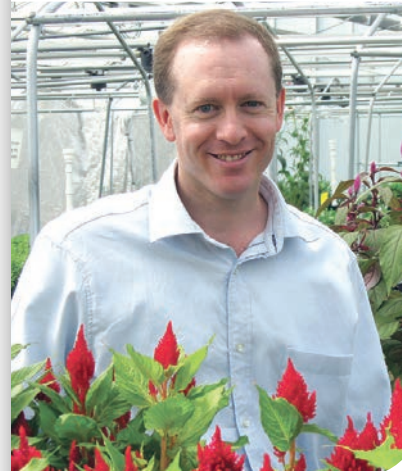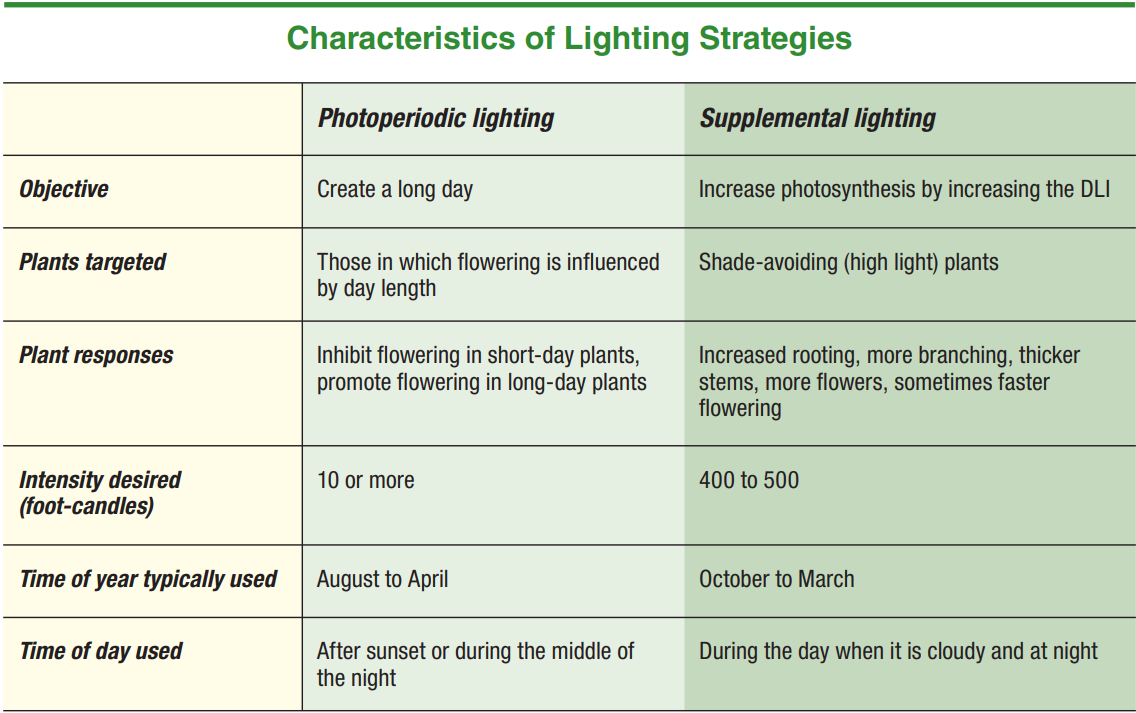
Strategies for supplemental lighting
DOWNLOADNovember 24, 2009 - E. Runkle
technically speaking By Erik Runkle

Strategies for Supplemental Lighting
Different methods of greenhouse lighting have different purposes — sometimes to extend the photoperiod and sometimes to increase the daily light interval. Knowing their differences may help you make better choices for your operation.
There is sometimes confusion between lighting to create a long photoperiod and lighting to increase the daily light integral (DLI). Photoperiodic lighting requires only low-intensity light (typically 10 foot-candles or 1-2 μmol∙m-2∙s-1) and is used only after sunset or before sunrise. In contrast, supplemental lighting delivers a high intensity of light (typically 400 to 500 foot-candles) and is typically used from October through March on cloudy days and during the night.
The table below compares and contrasts the primary characteristics of each lighting strategy. Sometimes, growers will use supplemental lighting to increase the DLI, to create artifi cial long days or both. For example, providing 18 hours of light from high-pressure sodium lamps (e.g., on a cloudy winter day), increases the DLI and provides a long day simultaneously.
Cyclic lighting is a strategy used to create long days in which light is provided to plants on an intermittent basis, typically for four hours in the middle of the night. Methods to deliver cyclic lighting include turning incandescent lamps on and off (for example, on for 10 minutes and off for 20 minutes), using highpressure sodium lamps with rotating refl ectors (such as Beamfl ickers), and operating booms mounted with high-intensity lamps back and forth over crops. Cyclic lighting can be useful to manipulate the photoperiod but has essentially no effect on the DLI.
Photoperiodic lighting is often used on stock plants (to inhibit fl owering of short-day plants), to fi nish longday bedding and to induce early fl owering in perennial crops. High-intensity supplemental lighting is often used on plugs and liners produced in Northern climates until early spring because the cost on a perplant basis is small and ambient light levels are low. Supplemental lighting on ornamental crops during the fi nish stage is less common in the United States and usually restricted to crops that require high light for adequate plant quality.



 Print
Print Email
Email




